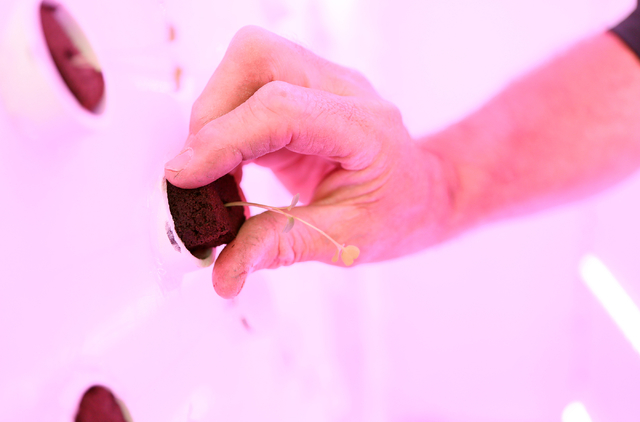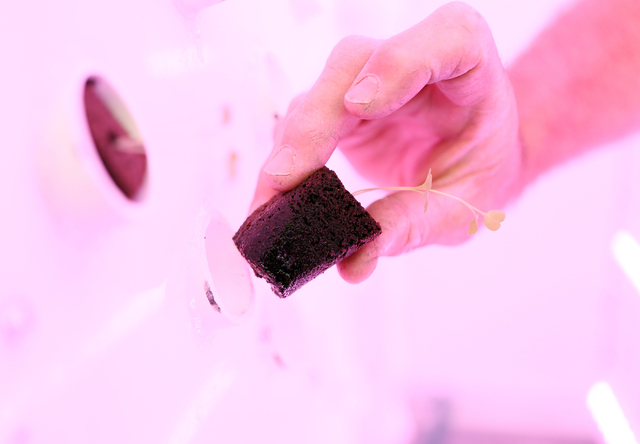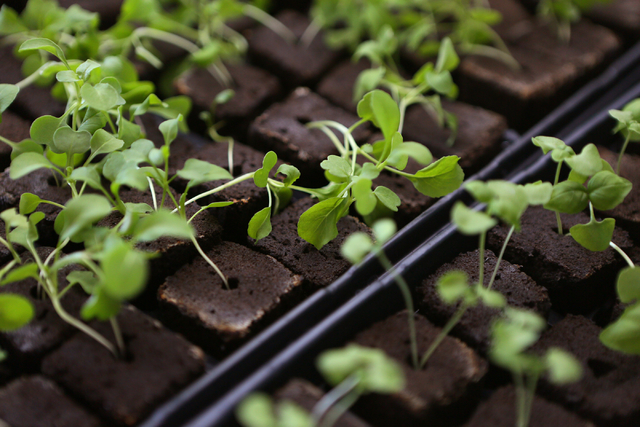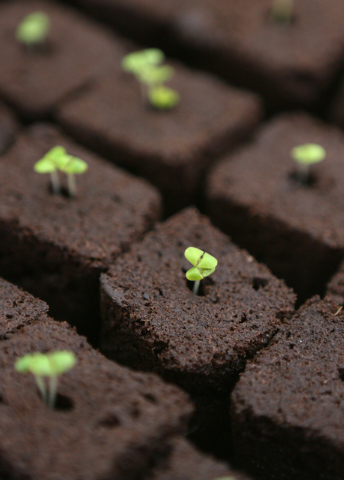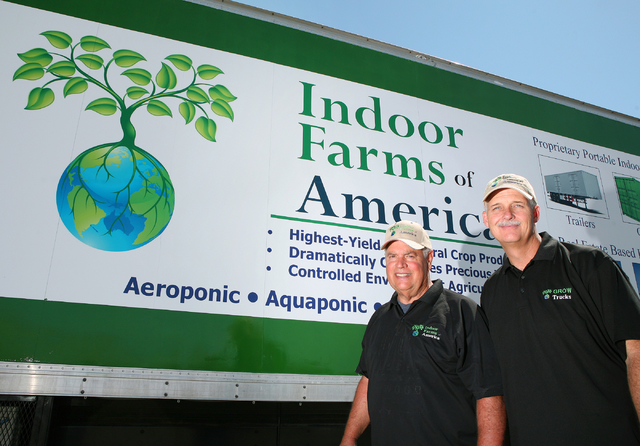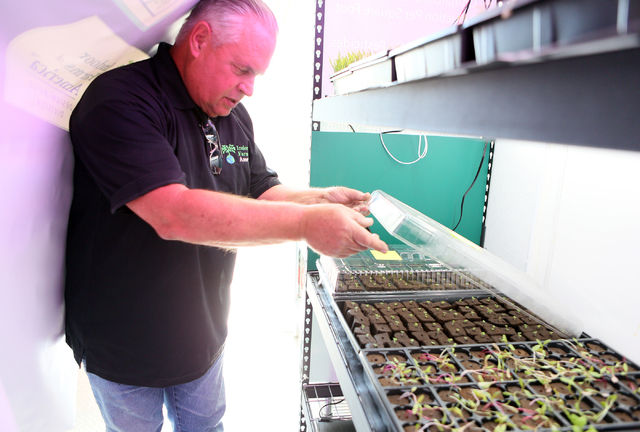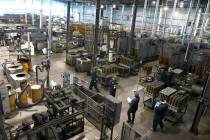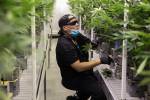Las Vegas-based indoor farming company poised to put down roots
When people think of Las Vegas, they often picture the Strip, the desert and casinos. But a Southern Nevada business debuting this week has another reference in mind – indoor farming.
That’s set to unfold Tuesday when Las Vegas-based Indoor Farms of America introduces its technology for water-saving indoor farming at the third annual Indoor Ag-Con at the Downtown Grand. More than 125 businesses, universities and groups are attending.
For the past 18 months, the company has been developing its technology and has patents pending on what officials say leapfrogs existing commercially available systems for crop yields for fruits and vegetables.
It’s referred to as a “vertical aeroponic growing device” that houses plants without any soil. The open chamber with its roots exposed to the air is infused with water from mist-spraying nozzles and is supplied with natural organic fertilizer and LED lighting to help it grow more rapidly than traditional farming. Germinated seeds are transplanted into the chamber and produce can be harvested within 30 days – sometimes more than twice as fast as outdoor farming, said David Martin, co-founder of the company.
“I don’t think it will replace agriculture as it’s traditionally done by any stretch of the imagination, but it has a definitive purpose and role in helping in areas that need help,” Martin said.
The idea germinated from company co-founder Ron Evans who was asked to help design an aquaponic system in Haiti for an orphanage destroyed in the 2010 earthquake. That system helped the orphanage grow fish and food for its own use and to sell it on the open market and earn revenue.
The 71-year-old Evans, whose family farmed in Illinois where he grew up, said after he did the work for the orphanage to make it economically viable, “bells and whistles went off in me” that it could be done commercially.
‘EXTRME WEATHER’
“Everywhere in the world where you have extreme weather whether it’s Nome, Alaska, or if it’s the Middle East or California where it is dry, we will use less water than conventional farming by 90 to 95 percent. When we are in the middle of a drought, we recycle everything. All the water sprayed on the crops is all captured and all recycled,” he said.
Indoor Farming has two models for its program. One houses the plants in semi-trailers or other trucks and the second allows a set up in a warehouse or building as large as 100,000 square feet.
“When you’re walking into a farm, it looks like you’re walking into a clean room,” Martin says. “If you wanted to have a farm and would like grow 100,000 heads of lettuce a month or grow 10,000 pounds of tomatoes, we have got the different systems to allow us to do that.”
Martin said he could envision casinos having their own indoor farms where kitchen staff could walk to a trailer to retrieve vegetables or fruits needed for the day. Business in the inner city could use the concept to provide food as well since most food in grocery stores travels more than 1,500 miles and is already more than two weeks off the farm, he said.
Evans said the agriculture show is a chance for the company to showcase to the world what it’s been working on over the last 18 months. They’ve kept it hidden until they filed for patent protection.
“We’re at the tip of the iceberg for this whole thing,” Evans says. “A lot of people have used hydroponics and aquaponics as a hobby but with the technologies we have developed, this is now a commercially viable system so that someone can come in and turn a profit.”
MARIJUANA INDUSTRY SHOWS INTEREST
Martin said their efforts have already gotten the attention of the legal marijuana-growing industry and he has talked to them about it but the primary focus is on helping indoor farmers grow fruits and vegetables for consumption.
Indoor farming is a much bigger enterprise than many people imagine and it’s going to expand in the future, Martin said. Historically, it has been more costly to operate and produce crops in a controlled environment when compared to crops grown traditionally in soil, such as a farmer’s field, Martin said.
“We know the trials and tribulations of the farming family, and we set out to develop better things that would make it viable from an economic standpoint,” Martin said. “It’s quite fascinating. I grew up as a kid tilling my mother’s garden (in Maryland). It’s a different world now for what you can do.”




